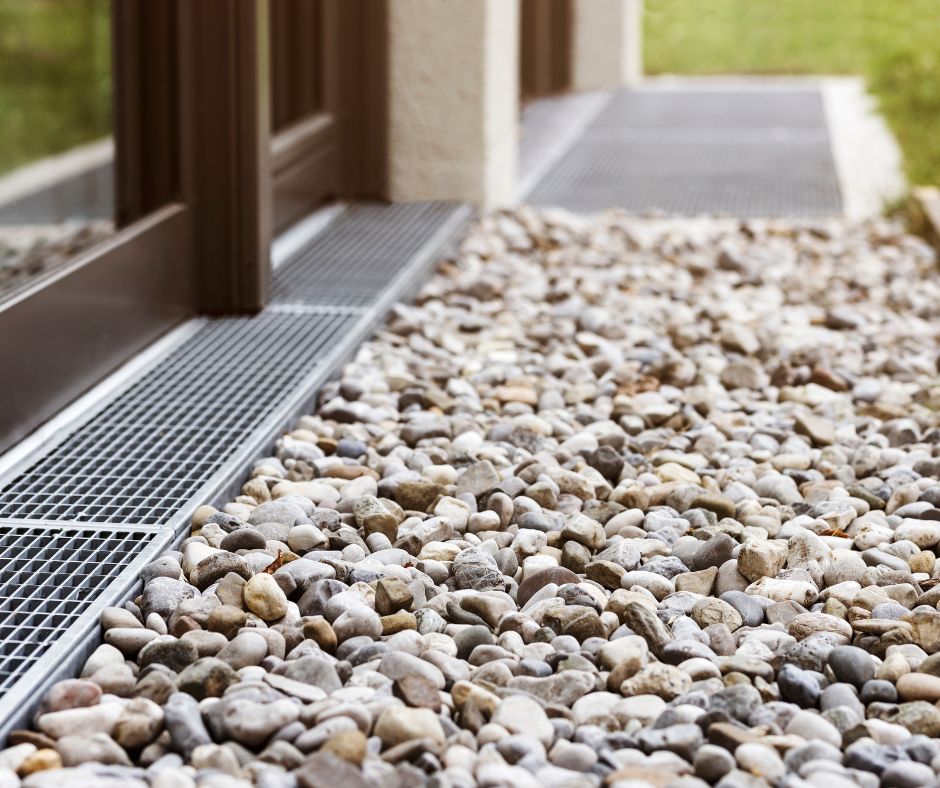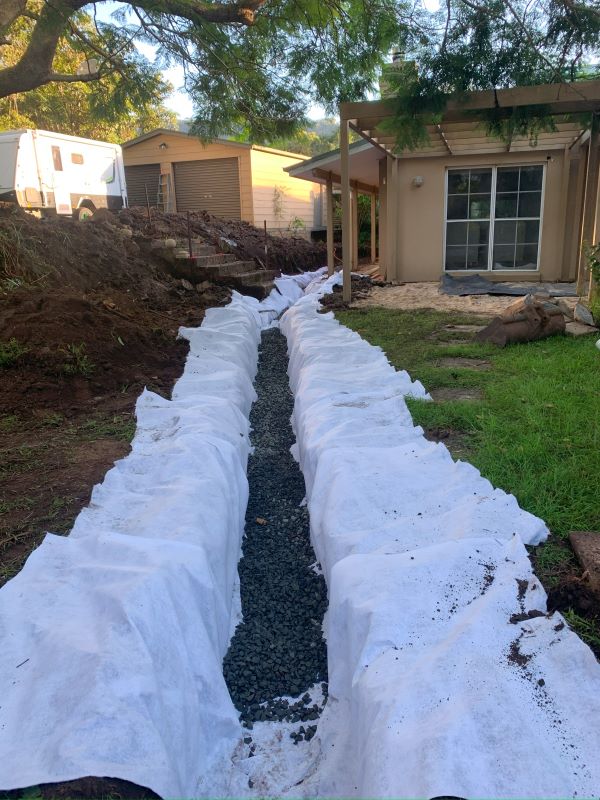In-Depth Analysis of the Key Factors Leading to Blocked Stormwater Drains
Blocked stormwater drains can occur due to a variety of natural and structural factors, including the buildup of leaf debris, penetration by tree roots, and occurrences of pipe collapse. Common indicators of a blockage may include sluggish water drainage, noticeable water pooling around drainage grates, unusual gurgling sounds from the pipes, or even water backing up into your home after heavy rainfall. To effectively address these issues, it is essential to first remove any visible surface debris and conduct a comprehensive inspection for potential pipe blockages. If problems persist, you might want to consider installing a French drain system, which can efficiently divert excess water away from your home’s foundations, thus preventing possible damage.

During intense rainfall, your stormwater management system is engineered to channel water efficiently away from your property. However, when drains become obstructed, water can quickly accumulate, leading to flooding in gardens, potential harm to your home’s foundations, and even water intrusion into basements or subfloors. Homeowners in Wollongong, particularly those residing on sloped blocks or in areas with clay-rich soil, may find that blocked stormwater drains are a frequent issue that requires ongoing vigilance to avoid costly repairs.
Whether your drainage grate is overflowing or your backyard resembles a swamp after each rainstorm, this detailed guide will delve into the various causes of such blockages, provide step-by-step instructions on how to clear them effectively, and offer insights on when it might be necessary to consider a more sophisticated solution, such as a French drain system. By grasping these elements, you can take proactive measures to maintain your property’s drainage systems.
Discovering the Common Causes of Blocked Stormwater Drains in Wollongong
1. The Effect of Leaf Litter and Organic Garden Debris Buildup
During inclement weather, organic materials like leaves, bark, and mulch can wash into surface grates, creating a natural barrier that inhibits proper water flow. Without consistent maintenance and cleaning, these blockages can accumulate rapidly, especially in densely vegetated suburbs such as Keiraville, Figtree, or Mt Keira. Homeowners need to stay proactive in clearing these areas to prevent flooding and potential water damage, ensuring stormwater systems function effectively.
2. The Adverse Effects of Invasive Tree Roots on Drainage Systems
Mature trees have extensive root systems that often search for moisture sources, which can lead them to infiltrate and damage PVC or clay pipes. Over time, this infiltration can severely restrict water flow and trap additional debris within the pipes, causing significant blockages. Such invasions require swift action, as they can result in expensive repairs and further deterioration of your stormwater infrastructure.
3. Recognizing Pipe Collapse and Silt Buildup in Older Drainage Systems
Older stormwater systems, particularly those in homes built prior to the year 2000, are prone to problems such as collapsed pipes, improper fall angles, or excessive sediment accumulation. These issues often go unnoticed until a major rainfall event occurs, leading to sudden failures that can cause extensive property damage. Regular inspections and maintenance are essential for identifying and addressing these weaknesses before they develop into serious problems.
4. The Impact of Improper Surface Grading on Water Drainage Effectiveness
If your yard is not graded properly to slope away from your home, water will naturally accumulate near walls and grates, which increases the risk of flooding. Even a well-functioning stormwater pipe may struggle to manage excess water if the surface does not promote effective drainage. Regular evaluations of your property’s grading can aid in mitigating these issues, ensuring that water flows away from critical areas and minimizing the risk of damage.

Recognizing the Signs of a Blocked Stormwater Drain
- Surface water pooling around grates or downpipes
- Gurgling or bubbling noises during rainfall
- Water overflowing from gutters or drainage pits
- Soggy lawns or spongy soil remaining days after rainfall
- Basement or garage flooding after storms
Step-by-Step Guide for Efficiently Clearing a Blocked Stormwater Drain
1. Start by Removing Surface Debris
Commence your drain clearing process by taking away leaves, silt, and other debris from grates, pits, and downpipe guards. Often, the blockage can be traced back to materials just below the surface cover, making this an essential first step.
2. Flush the Drain Line Using High-Pressure Water
Employ a high-pressure hose or jetter to effectively dislodge shallow blockages. However, if you notice the system starting to back up, cease operations immediately, as applying more pressure may worsen a collapsed section of the pipe, leading to further complications.
3. Use a Drain Camera for Detailed Inspection
A licensed plumber can carry out a thorough inspection of stormwater pipes using a CCTV drain camera. This advanced technology uncovers cracks, blockages, or misaligned connections that may be causing drainage issues, enabling targeted repairs.
4. Consult Professionals for Tree Root Blockages
If tree roots are found to be the source of the blockage, pipe relining might be the best long-term solution, as it seals the pipe without necessitating excavation. If you’re uncertain about the best course of action, our Wollongong drainage specialists can provide an accurate diagnosis and efficiently repair blocked systems.
When to Consider Installing a French Drain System for Your Property
French drains are innovative subsurface drainage systems that are specifically designed to redirect water away from your property. These systems consist of a gravel-filled trench containing a perforated pipe, which is installed at a slight slope to transport water toward a designated discharge point, ensuring effective drainage and minimizing water accumulation.
Optimal Scenarios for Implementing a French Drain:
- Yard flooding occurs even with downpipes functioning correctly
- Water pooling near retaining walls or foundations
- Driveway runoff overwhelming existing surface drains
- Sloped blocks where water channels downhill
Our team specializes in designing and installing custom French drain systems in Wollongong, tailored to suit local soil conditions, slopes, and rainfall patterns, ensuring optimal performance and longevity of your drainage system.

Comparative Overview: French Drains vs. Standard Stormwater Systems
| Feature | Stormwater Drain | French Drain |
|---|---|---|
| Handles Roof Runoff |  |
 |
| Handles Groundwater |  |
 |
| Installed Under Grass |  |
 |
| Requires Surface Inlet |  |
Optional |
| Best For Surface Flow |  |
Partial |
| Best For Subsoil Drainage |  |
 |
Effective Strategies to Prevent Future Blockages in Stormwater Drains
- Thoroughly clear gutters and drainage grates before the storm season begins
- Install leaf guards on downpipes to reduce the entry of debris
- Schedule annual drain jetting or camera inspections to maintain the system’s integrity and functionality
- Avoid planting trees near underground drainage lines to prevent potential root intrusion
- Ensure that lawn gradients slope away from structures to promote effective water drainage
Essential Advice for Wollongong Homeowners on Stormwater Management
Blocked stormwater drains can pose more than just a minor inconvenience; they present serious risks to your home’s structural integrity. Issues such as flooded footings, damp basements, and persistent water pooling indicate an overloaded or malfunctioning drainage system that requires immediate attention and resolution.
If clearing surface debris does not resolve the issue, there may be a deeper underlying problem within your pipes or in the overall water management strategy of your property. This is where expert design and drainage solutions become invaluable in protecting your home against moisture-related damage.
Do not wait to address these concerns until the next flooding event arises. If your yard is retaining water, your drainage pits are overflowing, or you suspect tree roots are invading your lines, contact our team today for a professional inspection.
We will accurately pinpoint the issue and, if needed, design a tailored French drain or pipe solution specifically suited to your site requirements.
The Article: Blocked Stormwater Drains: Causes and Solutions in Wollongong first appeared on https://writebuff.com
The Article Stormwater Drain Solutions: Causes in Wollongong Was Found On https://limitsofstrategy.com

